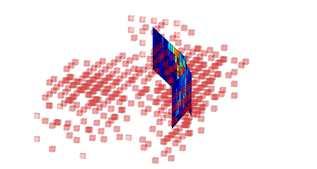Difference between revisions of "Seismology"
m (→Earthquake Prediction) |
m (→Earthquake Prediction) |
||
| Line 39: | Line 39: | ||
<youtube>KCDRZj8mVR0</youtube> | <youtube>KCDRZj8mVR0</youtube> | ||
| − | = Earthquake | + | = Earthquake = |
http://storage.googleapis.com/gweb-uniblog-publish-prod/original_images/aftershocks_3d.gif | http://storage.googleapis.com/gweb-uniblog-publish-prod/original_images/aftershocks_3d.gif | ||
Revision as of 11:59, 11 September 2020
Youtube search... ...Google search ..Google News ... mapped
- Case Studies
- Assessing earthquake damage
- Artificial Intelligence Takes On Earthquake Prediction | Ashley Smart - Quanta Magazine
- A Silent Build-up in Seismic Energy Precedes Slow Slip Failure in the Cascadia Subduction Zone | C. Hulbert, B. Rouet-Leduc, P. Johnson
- Forecasting earthquake aftershock locations with AI-assisted science | Phoebe DeVries
- Seismology | Wikipedia
- Kaggle Earthquake Prediction Challenge
- Earthquake Ground Motion Simulation Using Novel Machine Learning Tools | Arzhang Alimoradi
- Groundbreaking earthquake catalog may have just solved a seismic mystery | Jenny Howard - National Geographic
Contents
Factors
Earthquake

|
Earthquake Prediction
Kaggle: Earthquake Prediction Challenge
Forecasting earthquakes is one of the most important problems in Earth science because of their devastating consequences. Current scientific studies related to earthquake forecasting focus on three key points: when the event will occur, where it will occur, and how large it will be. In this competition, you will address when the earthquake will take place. Specifically, you’ll predict the time remaining before laboratory earthquakes occur from real-time seismic data. If this challenge is solved and the physics are ultimately shown to scale from the laboratory to the field, researchers will have the potential to improve earthquake hazard assessments that could save lives and billions of dollars in infrastructure. This challenge is hosted by Los Alamos National Laboratory which enhances national security by ensuring the safety of the U.S. nuclear stockpile, developing technologies to reduce threats from weapons of mass destruction, and solving problems related to energy, environment, infrastructure, health, and global security concerns.
Siraj Raval's
Data Science coding challenge time! The popular Data Science competition website Kaggle has an ongoing competition to solve the problem of earthquake prediction. Given a dataset of seismographic activity from a laboratory simulation, participants are asked to create a predictive model for earthquakes. In this video, I'll attempt the challenge as a way to teach 3 concepts; the Data Science mindset, Categorical Boosting, and Support Vector Regression (SVR) models. I'll be coding this using Python from start to finish in the online Google Colaboratory environment. The credits are from a mix of different Kaggle Kernels that I liked (lots), as well as my own code + explanations.This is the code for the Kaggle Earthquake Challenge videp | Siraj Raval on YouTube...